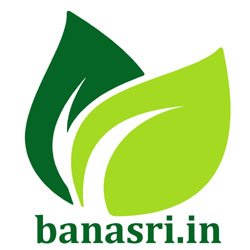
Festivals of Meghalaya
Meghalaya, often referred to as the “Abode of Clouds,” is renowned for its vibrant cultural heritage and unique traditions. The festivals celebrated in this northeastern state of India are a reflection of the rich cultural tapestry and the harmonious coexistence of its indigenous tribes. Here is a detailed look at some of the most prominent festivals of Meghalaya.
Nongkrem Dance Festival
Time of Festival
- November
Specialty of the Festival
- Significance: Thanksgiving festival for a bountiful harvest and to appease the goddess Ka Blei Synshar.
- Activities: Traditional dances, rituals, and animal sacrifices.
Locality of the Festival
- Celebrated by: Khasi tribe
- Major Locations: Smit, near Shillong
Nature of the Festival
- Type: Agricultural and religious
- Description: The highlight of the festival is the Nongkrem dance, performed by young men and women dressed in traditional attire. The Syiem (chief) performs rituals and offers sacrifices to ensure the well-being and prosperity of the community.
Shad Suk Mynsiem
Time of Festival
- April
Specialty of the Festival
- Significance: Celebrating the arrival of spring and expressing gratitude for the harvest.
- Activities: Traditional dances, songs, and rituals.
Locality of the Festival
- Celebrated by: Khasi tribe
- Major Locations: Shillong and other Khasi-dominated areas
Nature of the Festival
- Type: Agricultural and cultural
- Description: Also known as the “Dance of Happy Hearts,” Shad Suk Mynsiem involves men and women performing traditional dances to the accompaniment of drums and flutes. The festival is a celebration of life, fertility, and community.
Wangala Festival
Time of Festival
- November
Specialty of the Festival
- Significance: Harvest festival to honor the Sun God, Saljong.
- Activities: Traditional dances, music, and rituals.
Locality of the Festival
- Celebrated by: Garo tribe
- Major Locations: Tura and other Garo Hills regions
Nature of the Festival
- Type: Agricultural and cultural
- Description: Also known as the “100 Drums Festival,” Wangala features rhythmic drum beats, dances like Dama Gogata, and community feasts. It’s a time for the Garo people to give thanks for a good harvest and to celebrate their cultural heritage.
Behdienkhlam Festival
Time of Festival
- July
Specialty of the Festival
- Significance: Driving away evil spirits and praying for a good harvest.
- Activities: Rituals, traditional dances, and the symbolic destruction of wooden structures.
Locality of the Festival
- Celebrated by: Jaintia tribe
- Major Locations: Jowai in the Jaintia Hills
Nature of the Festival
- Type: Religious and cultural
- Description: The festival includes a procession of men carrying wooden structures called “rots,” which are later destroyed to symbolize the eradication of evil. Traditional dances and music accompany the rituals, and the festival concludes with the immersion of the rots in a sacred pool.
Ka Pomblang Nongkrem
Time of Festival
- November
Specialty of the Festival
- Significance: Thanksgiving and prayer for prosperity and well-being.
- Activities: Animal sacrifices, traditional dances, and rituals.
Locality of the Festival
- Celebrated by: Khasi tribe
- Major Locations: Smit, near Shillong
Nature of the Festival
- Type: Agricultural and religious
- Description: Also known as the Nongkrem Dance Festival, this event involves the Syiem offering sacrifices to the deity Ka Blei Synshar. The festival is marked by traditional dances performed by young men and women, reflecting the rich cultural heritage of the Khasi people.
Laho Dance Festival
Time of Festival
- March or April
Specialty of the Festival
- Significance: Social gathering and celebration of community bonds.
- Activities: Traditional dances, songs, and feasting.
Locality of the Festival
- Celebrated by: Pnar tribe
- Major Locations: Jaintia Hills
Nature of the Festival
- Type: Cultural and social
- Description: The Laho Dance Festival features men and women dressed in traditional attire performing coordinated dances to the rhythm of drums and flutes. It’s a time for the community to come together, celebrate their cultural identity, and reinforce social bonds.
Chad Sukra
Time of Festival
- April
Specialty of the Festival
- Significance: Preparing for the sowing season and ensuring protection from natural calamities.
- Activities: Rituals, traditional dances, and community feasts.
Locality of the Festival
- Celebrated by: Jaintia tribe
- Major Locations: Jaintia Hills
Nature of the Festival
- Type: Agricultural and religious
- Description: The festival involves rituals to seek blessings for a good sowing season. Traditional dances and songs are performed, and the community participates in feasts, strengthening communal ties and celebrating their cultural heritage.
The festivals of Meghalaya are a testament to the rich cultural diversity and deep-rooted traditions of its indigenous tribes. Each festival is a unique blend of rituals, dances, music, and communal harmony, offering a fascinating glimpse into the cultural tapestry of this beautiful state.
